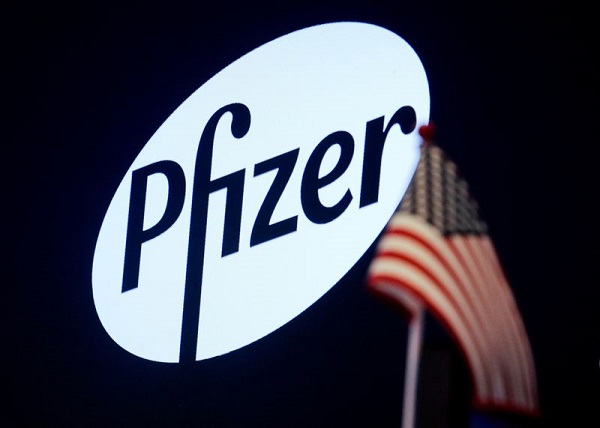The pharmaceutical industry stands as a beacon of innovation, providing life-saving drugs and therapies to billions worldwide.
This article delves into the top pharmaceutical companies, exploring their histories, breakthrough contributions, market dominance, and strategies shaping the future of healthcare.
1. Pfizer Inc.
Headquarters: New York, USA
Revenue (2023): $81.3 billion
Pfizer is synonymous with innovation, especially after its groundbreaking mRNA-based COVID-19 vaccine, developed in partnership with BioNTech. Founded in 1849, the company has a rich history of producing some of the most widely used drugs, including Lipitor (cholesterol management) and Viagra.
Key Contributions:
- COVID-19 Vaccine: First mRNA vaccine to receive emergency use authorization.
- Rare Disease Therapies: Active portfolio in genetic and rare diseases, leveraging CRISPR technology.
Future Outlook:
Pfizer’s robust pipeline includes oncology, immunology, and gene therapy drugs, with significant investment in AI-driven drug discovery.
2. Roche Holding AG
Headquarters: Basel, Switzerland
Revenue (2023): $68.4 billion
A pioneer in biotechnology, Roche leads in diagnostics and oncology. Known for its personalized medicine approach, the company integrates diagnostic tools with targeted treatments.
Key Contributions:
- Cancer Treatments: Innovators of Herceptin and Avastin, transforming cancer care.
- Diagnostics: World leader in molecular diagnostics and COVID-19 testing solutions.
Future Outlook:
Roche’s focus on precision medicine and next-gen sequencing positions it as a leader in personalized healthcare.
3. Johnson & Johnson (J&J)
Headquarters: New Jersey, USA
Revenue (2023): $94.9 billion
Known for its consumer healthcare products, J&J is also a pharmaceutical powerhouse. Its Janssen division produces treatments for oncology, immunology, and cardiovascular diseases.
Key Contributions:
- Immunology Advances: Remicade and Stelara revolutionized treatment for autoimmune disorders.
- COVID-19 Vaccine: Single-dose vaccine showcasing J&J’s rapid response capabilities.
Future Outlook:
With the recent spin-off of its consumer division, J&J aims to enhance its pharmaceutical and med-tech portfolios.
4. Novartis AG
Headquarters: Basel, Switzerland
Revenue (2023): $52.3 billion
Novartis is renowned for innovation in cell and gene therapy. Their flagship products, such as Gleevec, have been game-changers in oncology.
Key Contributions:
- Gene Therapy: Zolgensma, a one-time treatment for spinal muscular atrophy, highlights Novartis’s pioneering role.
- Ophthalmology: Portfolio includes therapies for diseases like macular degeneration.
Future Outlook:
Novartis focuses on digital transformation and data-driven R&D to maintain its competitive edge.
5. Merck & Co.
Headquarters: New Jersey, USA
Revenue (2023): $59.3 billion
Merck’s breakthrough cancer drug Keytruda has cemented its leadership in immuno-oncology. Founded in 1891, the company has a diverse portfolio spanning vaccines, oncology, and diabetes care.
Key Contributions:
- Keytruda: Expanding indications in cancer therapy, driving Merck’s revenue growth.
- Vaccines: Gardasil, a leading HPV vaccine, is a global public health triumph.
Future Outlook:
Merck is heavily invested in RNA-based therapeutics and expanding its oncology pipeline.
6. AstraZeneca
Headquarters: Cambridge, UK
Revenue (2023): $44.4 billion
AstraZeneca gained global prominence during the pandemic with its Oxford-AstraZeneca vaccine. The company has a robust portfolio in respiratory, cardiovascular, and oncology drugs.
Key Contributions:
- Oncology Leadership: Tagrisso and Imfinzi dominate in lung cancer treatment.
- COVID-19 Response: Supplied over 3 billion vaccine doses globally.
Future Outlook:
AstraZeneca’s focus on rare diseases and biologics aligns with its long-term growth strategy.
7. Sanofi
Headquarters: Paris, France
Revenue (2023): $44 billion
Sanofi is a leader in vaccines and specialty care. The company’s Dupixent, a blockbuster drug for eczema and asthma, continues to break sales records.
Key Contributions:
- Vaccines: Produces a significant share of the world’s flu vaccines.
- Rare Diseases: Active in enzyme replacement therapies for lysosomal storage disorders.
Future Outlook:
Sanofi is pivoting towards mRNA technology and enhancing its biologics capabilities.
8. GlaxoSmithKline (GSK)
Headquarters: Brentford, UK
Revenue (2023): $39.8 billion
GSK specializes in vaccines and infectious disease treatments. Its recent restructuring focuses on strengthening its pharmaceuticals division.
Key Contributions:
- Shingrix Vaccine: A world leader in shingles prevention.
- HIV Treatments: Through its ViiV Healthcare division, GSK leads in antiretroviral therapies.
Future Outlook:
GSK is investing in oncology and immunology to broaden its therapeutic reach.
9. AbbVie Inc.
Headquarters: Illinois, USA
Revenue (2023): $58 billion
Spun off from Abbott Laboratories in 2013, AbbVie has excelled in immunology and oncology. Humira, the world’s best-selling drug, has been its flagship product for years.
Key Contributions:
- Immunology: Rinvoq and Skyrizi ensure post-Humira growth.
- Neuroscience: Botox expands its portfolio into therapeutic and aesthetic uses.
Future Outlook:
AbbVie’s acquisition of Allergan enhances its diversification into aesthetics and neuroscience.
10. Bayer AG
Headquarters: Leverkusen, Germany
Revenue (2023): $45 billion
Bayer combines pharmaceutical innovation with consumer health products. Known for Aspirin, Bayer has also made significant strides in oncology and women’s health.
Key Contributions:
- Cardiovascular Drugs: Xarelto remains a top anticoagulant.
- Women’s Health: Leadership in contraceptive and hormone therapy products.
Future Outlook:
Bayer is focused on cell therapy and digital health to drive innovation.
Conclusion
These pharmaceutical giants are at the forefront of addressing global health challenges. With continuous investments in R&D, they are revolutionizing how we treat diseases, embrace technology, and enhance patient outcomes.
As the healthcare landscape evolves, these companies will undoubtedly remain pillars of innovation and leadership.
Also Read
Choosing the right contract research organization: Key factors to consider
Pharma firms missing potential in low- and middle-income markets-Report

